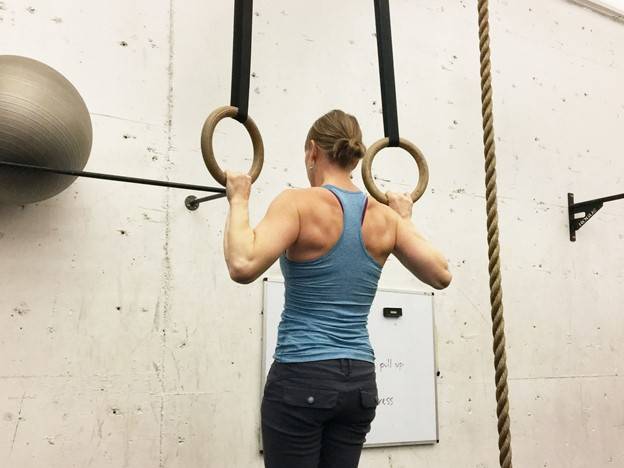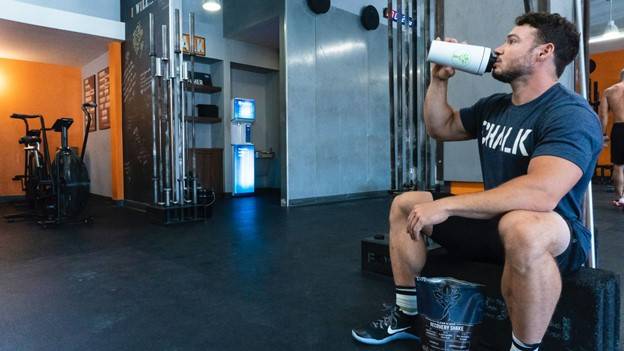We are all familiar with sore muscles. Many people think that muscle soreness after exercise is the result of lactic acid build-up. Lactic acid does build in the muscles when we are exercising intensely. We need oxygen to turn glucose into energy, but when there is not enough oxygen in our blood, our body breaks down glucose without oxygen resulting in lactic acid. However, the two to three-day sore muscles that result from a hard workout are not due to lactic acid.

July 2021. This article is independently written by Fusion 360. All opinions given are the opinion of Fusion 360

When you exercise, you create tiny micro-tears in the fibers of your muscles. These micro-tears trigger the body’s inflammatory processes. Red blood cells, white blood cells, cytokines, and lactic acid rush onto the scene to repair the damage. Inflammation is the body’s natural response to exercise, and while the resulting soreness can be irritating, sore muscles are a sign that your exercise routine is working.
The soreness after exercise—otherwise known as delayed onset muscle soreness (DOMS)—usually appears within 24-48 hours. If you’re starting a new workout routine and you are not sore, it may mean that you are not working out hard enough. On the other hand, if your soreness lasts for more than four days, you may be overtraining. Putting too much strain on your body could result in your muscles breaking down instead of building up.
While sore muscles can be irritating, this entire process is essential for building muscle and getting back in shape. To reduce muscle soreness after exercise, try one of the following techniques.
Active Rest Day
Taking a rest day is an integral part of your exercise routine. If your muscles do not have time to recover, you could send your body into a state of shock. If you incorporate a lot of high-intensity exercises like running, high-intensity interval training (HIIT), or Tabata, you may risk losing muscle instead of building it. It is best to allow your muscles time to rest and recover between training sessions to keep from overtraining and reaching a point where you plateau.
Active rest days are a good compromise. Instead of sitting around waiting for your next gym day, you can incorporate some gentle exercise routines like yoga, tai chi, or light resistance training. Active rest can reduce muscle soreness and speed up the healing process. For example, yoga promotes increased blood flow, which helps repair damaged muscle tissue. It also provides a complement to heavy weightlifting and cardio, which use repetitive motions to build muscle. Yoga targets the smaller muscles and increases flexibility.
You should have at least one full rest day a week. If yoga, tai chi, or light resistance training don’t appeal to you, try going for a short hike or bike ride. Getting up and moving will help reduce your recovery time.
Get Your Protein
Protein is one of the essential macronutrients that make up a balanced diet. The recommended daily allowance (RDA) of protein per person is .36 grams per pound of body weight. That means a person who weighs 150 lbs. should have about 55 grams of protein every day. If you are actively exercising and building muscle, the recommended daily allowance is twice as much.
Exercise triggers protein breakdown in the muscles. The amino acids in proteins help repair torn muscle fibers and build new ones. Experts recommend eating protein within 45 minutes of exercising, either before or after your workout. If you are increasing the intensity of your training, you need to make sure that you are eating enough calories to sustain yourself.
Adding a protein shake pre- or post-workout can help rebuild your muscle fibers faster. Your recovery time will decrease, and you will be ready to get back to the gym sooner.
Hydrate

Reduce muscle soreness after exercise with the most simple and effective treatment—hydration! Water is essential for building muscles and improving performance. When you are dehydrated, your ability to sense and feel pain is heightened. Our body holds onto water when it is inflamed. Water helps to heal the torn muscle fibers. This is one of the reasons you may be gaining weight after starting to exercise.
When you are hydrated, your body is in an optimal state to maximize the results of your workout. But what you drink matters as much as how much you drink. After you exercise, your body needs water, calories, sodium, and electrolytes. While plain water helps with recovery, it isn’t the only option if you want to reduce muscle soreness after exercise.
Tart Cherry Juice - A 2010 study shows that tart cherry juice can help reduce inflammation, muscle damage, and oxidative stress. It can help you recover more quickly and reduce muscle damage after exercise.
Coconut Water - Drinking coconut water after exercising will supply your body with potassium, electrolytes, and sugar. Coconut water does not contain sodium which our body craves after a strenuous workout. However, the sugar content of coconut water does return our blood sugar back to normal quicker than plain water.
Beer - Surprisingly, cracking a cold beer can be a great way to rehydrate after working out. Beer contains the carbohydrates and electrolytes you need to recover your strength after a workout. However, too much alcohol can suppress protein synthesis in the muscle and impede recovery.
Optimize Your Life
Muscle soreness after exercise can make it hard to keep a regular workout routine. One day you feel on top of the world, you beat your old pushup record or ran an extra half-mile, and the next, you can barely brush your teeth or get out of bed without flinching. Rest days, hydrating, and plenty of protein can help you build muscle and reduce soreness.
The Kailo Pain Patch is here to help you through the worst of your muscle soreness. It’ll also help with recurring aches and pains caused by other conditions and injuries. Just apply Kailo near the area where you feel pain and enjoy relief.
What are you waiting for? You can now start living the pain free life that you have hoped for. If a pain free life isn't incentive enough, try Kailo risk free with our 90-day money back guarantee. Shop now





